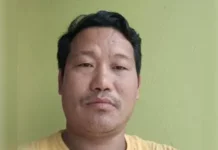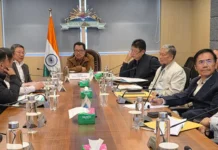[ Nyatum Doke ]
Few days back when I travelled to Jorhat, I met a friend and as she was enquiring about Longding, her husband suddenly interrupted “don’t you know Longding is a Shillong in our periphery”- I smiled and gave a hyperbolic reply “it’s even better.” By any means, he was not wrong; Longding is one of the most beautiful places in Eastern Arunachal Pradesh bestowed with good climate and kaleidoscopic cultures- well connected with good network of roads, nearby railways at Sapekhati and airports at Dibrugarh and Jorhat.
There are many potential areas for tourism, from adventure tourism to cultural to historical tourism, village tourism, eco-tourism: name it and it is there! But, whenever discussion on development of tourism in the district begins- it fizzles out in sad exclamatory remarks by authorities and people “Alas! Longding is not in the tourist circuit.” Not being included in the tourist circuit has become a stumbling block for Longding district hindering it from realizing the full potential that it possesses in the tourism sector.
Inclusion of Longding in the ‘disturbed area’ list and the concomitant security issues are often cited by MHA as the main arguments for the district not being included in tourist circuit- but this exclusion in the long run will only backfire and make the situation worst by creating a ‘vicious circle.’ For example: non recognition as a tourist circuit- unemployment – underdevelopment- amplifying security issues- issues of human security- this ‘negative loop’ is
self-perpetuating and does not augur well for the district hence, there is a need to break this cycle.
In order to break the negative loop, we need to create a ‘positive or virtuous loop.’ The effort toward recognizing the tourism sector having huge potential for employment generation would harbinger this ‘virtuous loop.’ For instance: ‘Inclusion in tourist circuit- boom in tourism activities- employment opportunities – economic development- reduction in security issues- inclusive development.’ ‘The inclusion’ will have ripple effects on other sectors as well leading to overall growth and development.
Today, as one travels from Kanubari to Longding- one can see many travelers from neighboring states enjoying the beautiful and mesmerizing natural beauty of the district. In Longding many travelers do visit, but ‘tourists are few’- i.e people visit for a minimum duration not maximum and the visit is not remunerative for the people of the district- the scenario may change positively with inclusion into the circuit. Also, due to exclusion, the district is deprived of various wonderful programs and schemes of the govt. related to tourism sector.
My point is simple, that security concern is obviously important and we must ensure the security of the tourists- for that necessary planning related to tourist routes and discussions with all the stakeholders can be held. But this concern cannot be an everlasting or never-ending excuse which devoid the district from being included in the Tourist Circuit map. Instead, security issues (augmented by underdevelopment and unemployment) should be the very reasons that sectors like tourism be promoted. In fact, this sector may also be used as rehabilitative measures for surrendered outfits by providing an alternative livelihood option.
I understand that getting included in the tourist circuit is not the panacea for all the ills and issues that the district is confronting. But I can emphatically argue that it is definitely a significant part of the solution. As opined by our CM Pema Khandu, “Changlang and Longding in the eastern part of the state – also need to be included in the tourist circuit so that they develop at par with other parts of the state.” Being included in the ‘tourist circuit’ has been the long cherished dream of the Longding denizens. If the dream becomes a reality, I am sure it will bring about a ‘virtuous circle’ of resilient, self-reliant and inclusive development. (The writer is DIPRO Longding and in-charge district tourism officer)



